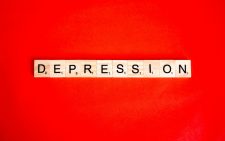When art therapy is worth a thousand words of counselling

About three years ago, Akinyi Oluoch worked with Faraja Cancer Support in a project where they would do artwork, colour, play and act with the children ailing in the cancer ward of the Kenyatta National Hospital.
She was impressed by how well children responded to play and how easily they would open up after.
She would use her therapy degree to ask insightful questions during play and artwork and would help them deal with weighty issues such as death.
Akinyi is a thespian, MC, poet, trained educational drama and speech teacher as well as a creative therapist.
She has been in the arts industry for over a decade now. She was drawn to creative therapy after she noticed that most of her friends in the acting industry would have post production depression after a production wrapped up.
So armed with her Bachelors in Psychology and Counselling, she started working as a creative arts therapist, then enrolled for a masters in art therapy and drama therapy from a University in Montreal Canada. But what exactly is creative art therapy?
What it is
“Art therapy is where art work is done as a conversation starter with a therapist. The therapist uses the painting or drawing to ask insightful questions into the artist’s work.
It can be done with both adults and young ones, either as an individual or in a group.
Artworks can tell people’s general moods as some people are drawn to moody light pieces and others to dark ones.
Asking questions such as what the piece is about are important as someone might just like black paint, or they might be going through a dark time emotionally and mentally,” Akinyi explains.
Other forms of creative art therapy may include music, dance, play, drama, and poetry therapies.
Play therapy is where a therapist plays with children using different toys and asks questions based on the child’s interaction with the toys.
Through the answers given, a therapist can gain useful insights into the child’s life that can be helpful in guiding the child and resolving any traumatic issues the child may be grappling with.
Play therapy is great for developing motor skills. It also offers insight into what the child is exposed to at home.
If the child is sexual with the toys or with other children, do not beat them up.
Talk to them and you might learn that someone at home watches adult content in view of everyone.
You can then safely explore the topic without making the child feel bad and change their point of view, Akinyi shares.
Drama therapy is the intentional use of drama and theater to achieve therapeutic goals also.
It uses tools such as childhood songs, which are a powerful tool for awakening suppressed memories.
It is important to explore patient’s life’s sonic landscape to help explore memories.
Drama therapy comes in many forms with different exercises being at the therapist’s disposal so they can curate a specific exercise according to a group or person’s needs.
She also shares that tasks complexity varies according to the person or group in the session.
“For children, we can simply paint their environment or abstract ideas and explore what those things mean to them, for instance.
For adults, we draw and paint more complex things. I for instance task them with dividing their paper in half and drawing what they are going through and how they are coping in the first half, and how they wish they were coping with it in an ideal world in the second half.
In both cases, we then explore the processes and the feelings evoked by the exercise as our work as therapists is to empower you and help you find insight in your life so you can work out the answers you need to make your life better.
In acting we can express different time periods of significance through mimes, dramatic acts or song,” the Hellen O’ Grady Drama Academy acting teacher explains.
Debunking myths
Many people believe that art therapy is a preserve of the artistically inclined and talented. Akinyi shares that it is not.
It is a form of expression that can be leveraged by anyone no matter how ineloquent one thinks they are.
Others think that it is a preserve for young children. It is not, art therapy is a science that transcends age.
“Anyone who can pick up a paintbrush and book, paper or easel can benefit from art therapy.
You do not have to be Pablo Picasso or Van Gogh, as art therapy is not about the end-product, but about the process.
Similarly, anyone who can move and express themselves through words, acting or a mime can benefit from drama therapy. You do not have to be Denzel Washington to do drama therapy.
You just have to be open to expressing yourself without being self-conscious and look for the catharsis that these experiences can offer you,” Akinyi further elaborates.












